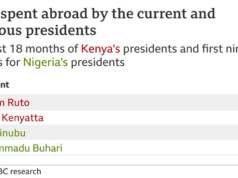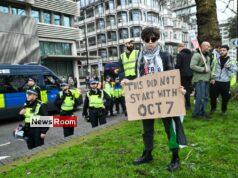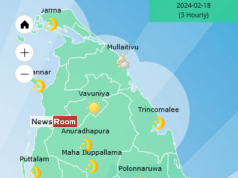Thursday’s tragic accident on the Colombo-Katunayake expressway, where State Minister Sanath Nishantha and his security officer died, has rekindled public debate on road safety. That fatal accident could have been avoided if the driver of the ill-fated vehicle had abided by road rules, we are told. A foreigner was killed yesterday when the van he was travelling in with his family crashed into a truck on the Outer Circular Expressway. The tourists were on their way to the BIA to return home after a happy stay here, when tragedy struck. That crash, too, was due to reckless driving, according to preliminary investigations. Our hearts go out to the families of the victims.
Excess speed contributes to most road accidents. Sri Lankans are notorious for driving or riding like bats out of hell, endangering their own lives as well as others’. Statistics are chilling. The number of lives snuffed out in road mishaps averages seven or eight a day! Road accidents account for one fourth of the total number of deaths reported in Sri Lanka, according to the Traffic Administration and Road Safety Division of the police.
About 12,000 deaths reportedly occur in the country annually, and about 3,000 of them are caused by road crashes. At least one person is killed in 10 road accidents every three hours on Sri Lankan roads. More than 20,000 lives have been lost in traffic accidents since 2016 according to police statistics. This alone is proof of how dangerous Sri Lanka’s roads have become.
The police have introduced a new system to nab errant drivers with the help of CCTV cameras. It has been implemented as a pilot project, and the process of fining the violators of traffic laws is scheduled to get underway shortly. There has been resistance to the new system in some quarters, but the law-abiding drivers need not worry. The new system must be implemented.
On expressways, cameras have been installed only in close proximity to interchanges, and motorists abide by road rules in those areas, and try to break the sound barrier when they move out of the camera range. The police have to hide on bridges or behind wayside bushes elsewhere, carrying radar speed guns, to nab them. Given the resource constraints, the police cannot perform this task efficiently. Hence the need for investing more in technology to make the expressways and other roads safe. The government need not worry about recovering its investment, given the sheer number of speedsters among us.
Apart from their human cost, road accidents entail enormous social and economic costs. They have the potential to reduce families to penury in case of their breadwinners perishing or sustaining serious injuries in crashes. According to the World Bank (WB) data, road crash fatalities and injuries could cost countries like Sri Lanka about 3-5% of their GDP annually, and Sri Lanka will require an additional investment of almost USD 2 billion over the coming decade to achieve the Sustainable Development Goal target of a 50 percent reduction in national road crash fatalities.
The WB recommendations for ensuring road safety are strengthening safe infrastructure design to ensure the protection of all road users and inclusion of roadside communities, establishing robust vehicle and driver licensing systems that are accessible by law enforcement agencies and regulatory authorities before the full power of safety compliance regimes can be exercised, facilitating inclusive road user policies and integrated land use/transport planning to ensure urban and rural roads are safe and accessible for all road users, and prioritising speed management in all planning and policy considerations addressing infrastructure, vehicle, and road user safety issues.
As for reckless driving, road safety experts inform us that smart speed advisory systems for highways are available. The traffic police must not limit their role to imposing fines on errant motorists after offences are committed; they have to concentrate more on the preventive aspects of road policing. It is high time Sri Lanka invested in road safety technologies besides adopting other measures to prevent deaths and injuries in traffic accidents.








